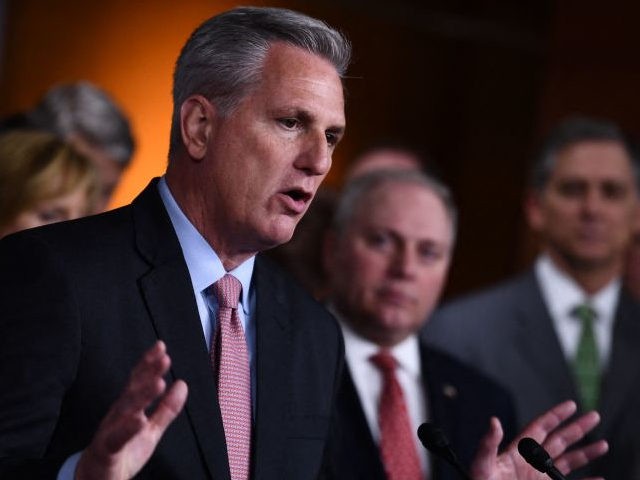The Republican Party is poised to retake a majority in the U.S. House of Representatives in the midterm elections, according to Decision Desk’s midterm election forecast model. At the same time, the GOP’s chances in the U.S Senate are a toss-up.
The Decision Desk model ran 14,000,605 simulations as of July 20, finding that Republicans have a substantial 88 percent probability of becoming the House’s majority party. The mean outcome has the GOP taking a 235-200 seat advantage over Democrats, which would be a momentous swing from the current Democrat lead of 220-211 with four vacancies. Republicans’ likelihood of assuming control of the Senate, however, is 45 percent, and the mean result is gridlock, with 50 Republicans, 48 Democrats, and 2 independents who caucus with Democrats. In essence, the numbers would stay the same as they are now, and the tiebreaker would remain with Vice President Kamala Harris. If either party takes the majority, it would most likely be by a seat or two.
The model pegs three Senate races as “Toss-ups,” two contests that “Lean” towards Republicans, and two that tip towards Democrats, while all other races are either “Likely,” or “Solid[ly]” favoring one of the two parties. Pennsylvania’s race is the closest toss-up listed on the board as of July 20 as Republican nominee Dr. Mehmet Oz squares off with his Democrat opponent Lt. Gov. John Fetterman to replace outgoing Sen. Pat Toomey (R-PA).
Nevada is ranked as the second most competitive contest, where Former Nevada Attorney General Adam Laxalt, the Republican nominee, looks to unseat Sen. Catherine Cortez Masto (D-NV). Finally, the third toss-up on the board is in Georgia. Republican nominee and Heisman Trophy winner Herschel Walker will spar with Sen. Raphael Warnock (D-GA) for the seat in November. The Arizona and New Hampshire Senate races lean Democrat, while contests in Ohio and North Carolina favor Republican candidates J.D. Vance and Rep. Ted Budd (R-NC), both of whom were endorsed by former President Donald J. Trump in their primaries.
The model rated 15 U.S. House races as toss-ups as of July 20. The following are the ten most competitive races based on the model’s projections for each candidate’s chances. Congressional primaries have yet to take place in New York, New Hampshire, and Michigan, so candidates are not listed below in such races.
-
California’s Thirteenth District: John Duarte (R) 48 percent v. Assemblyman Adam Gray (D-21) 52 Percent
-
Iowa’s Third District: State Sen. Zach Nunn (R) 52.1 percent v. Rep. Cindy Axne (D-IA) 47.9 percent
-
Illinois’ Thirteenth District: Regan Deering (R) 53.3 Percent v. Nikki Budzinski (D) 46.7 percent
-
New York’s Third District
-
Pennsylvania’s Seventh District: Lisa Scheller (R) 55.6 Percent v. Rep. Susan Wild (D-PA) 44.4 percent
-
New Hampshire’s First District
-
Oregon’s Sixth District: Mike Erickson (R) 44 v. State Rep. Andrea Salinas (D-38) 56 percent
-
Ohio’s Ninth District: JR Majewski (R) 56.4 v. Rep. Marcy Kaptur (D-OH) 43.6 percent
-
Michigan’s Eighth District
-
Oregon’s Fourth District: Alex Skarlatos (R) 60.1 percent v. Val Hoyle (D) 39.9 percent
With the November 8 elections still more than 100 days out, there is plenty of time for these numbers to fluctuate one way or another.

COMMENTS
Please let us know if you're having issues with commenting.